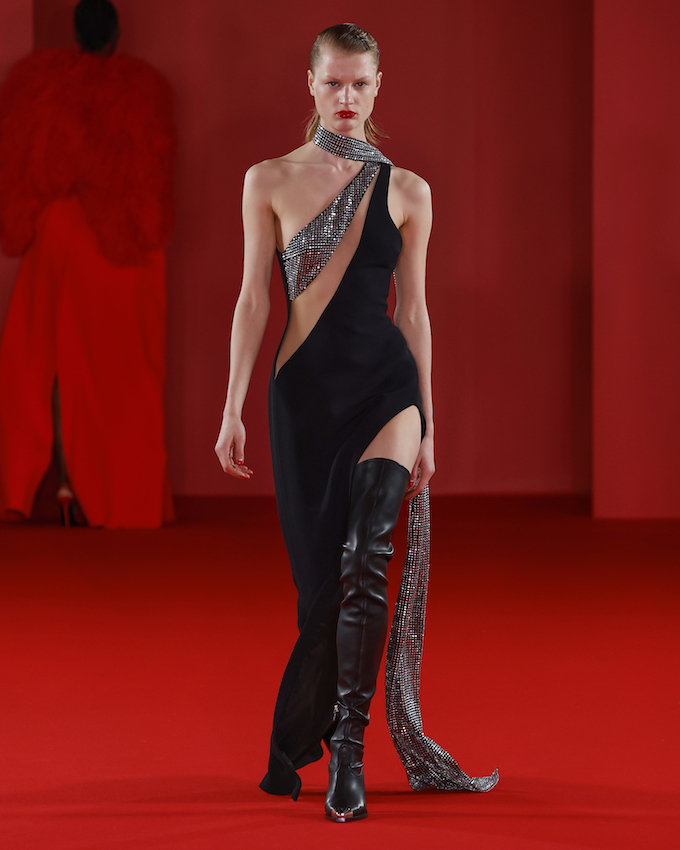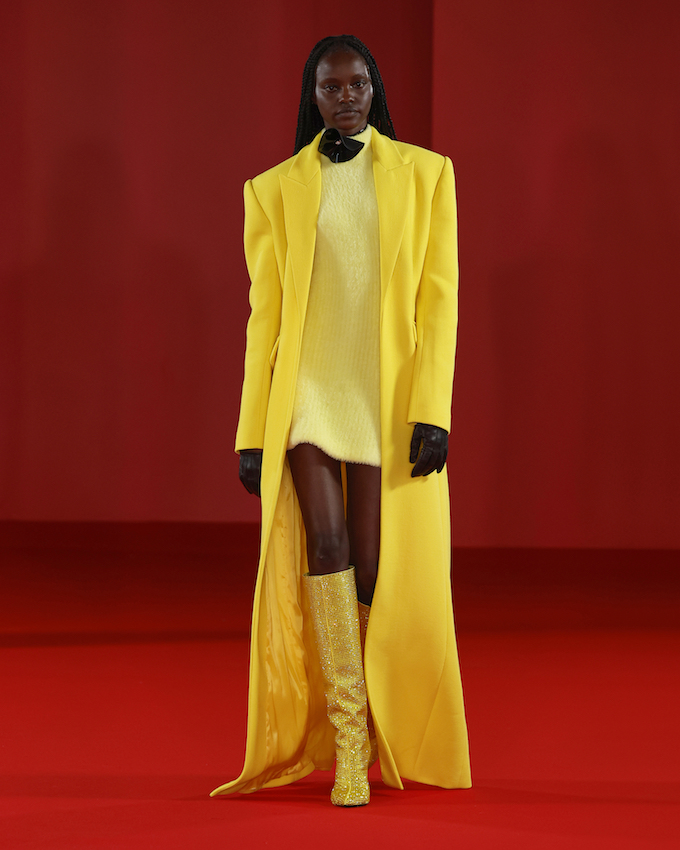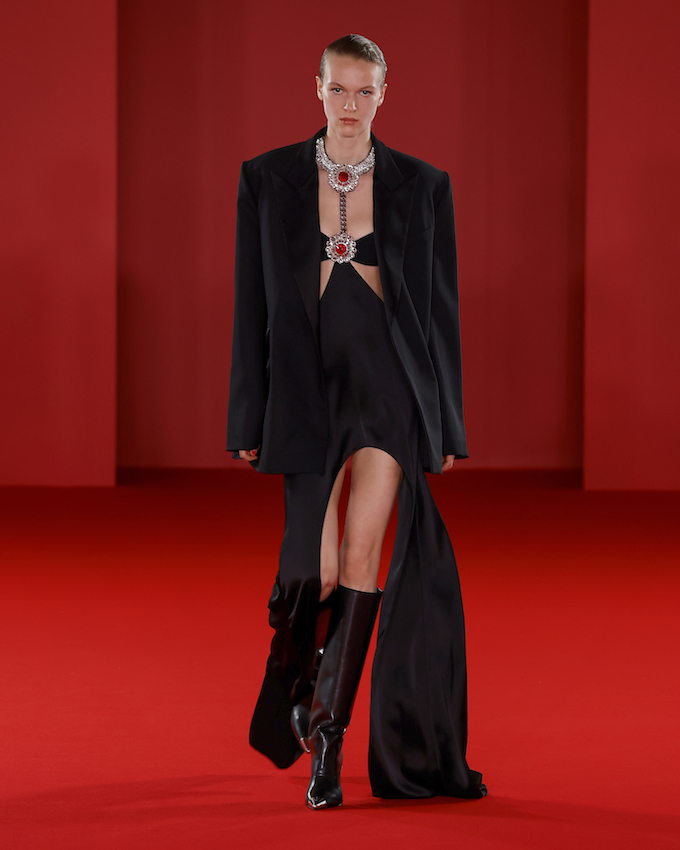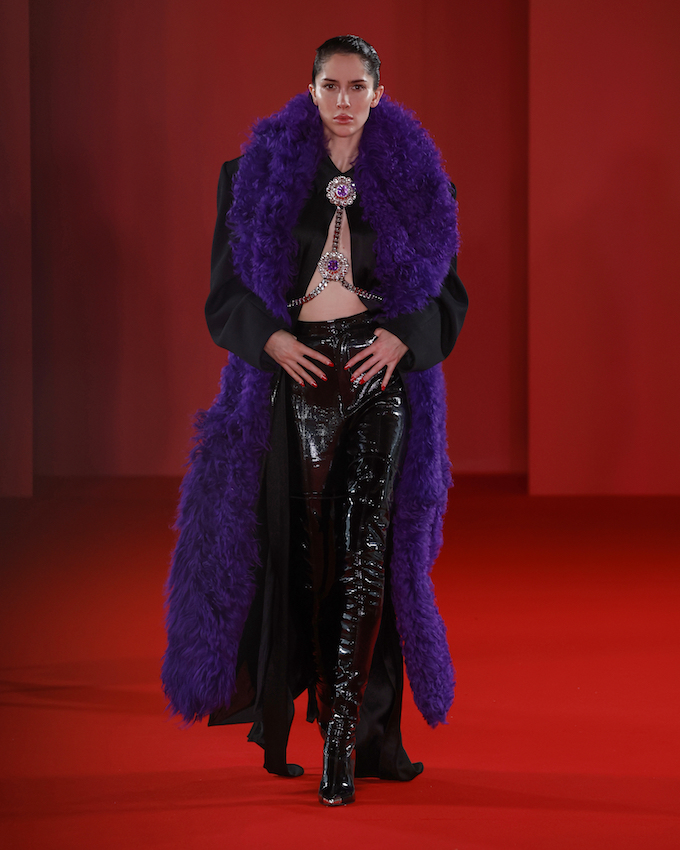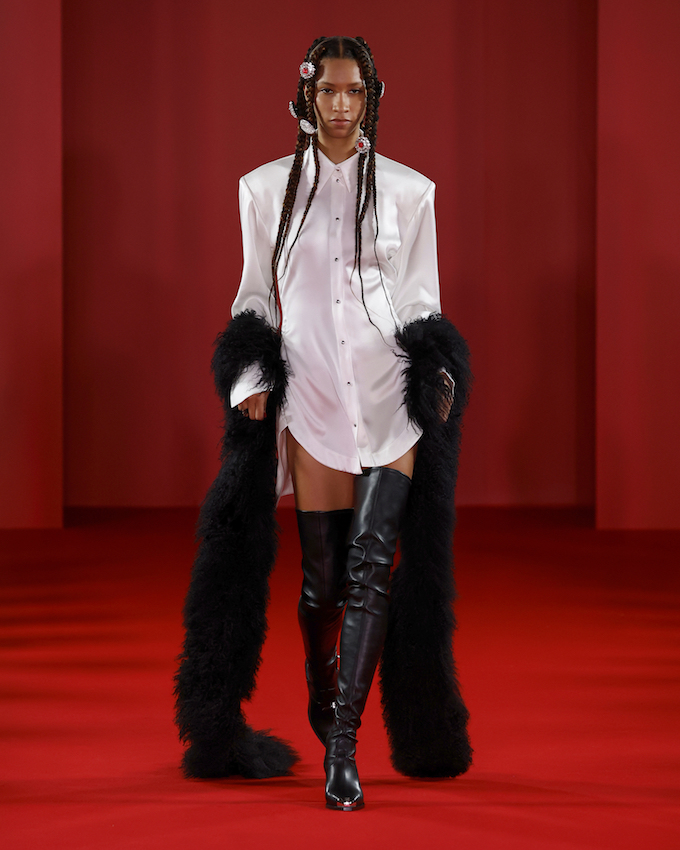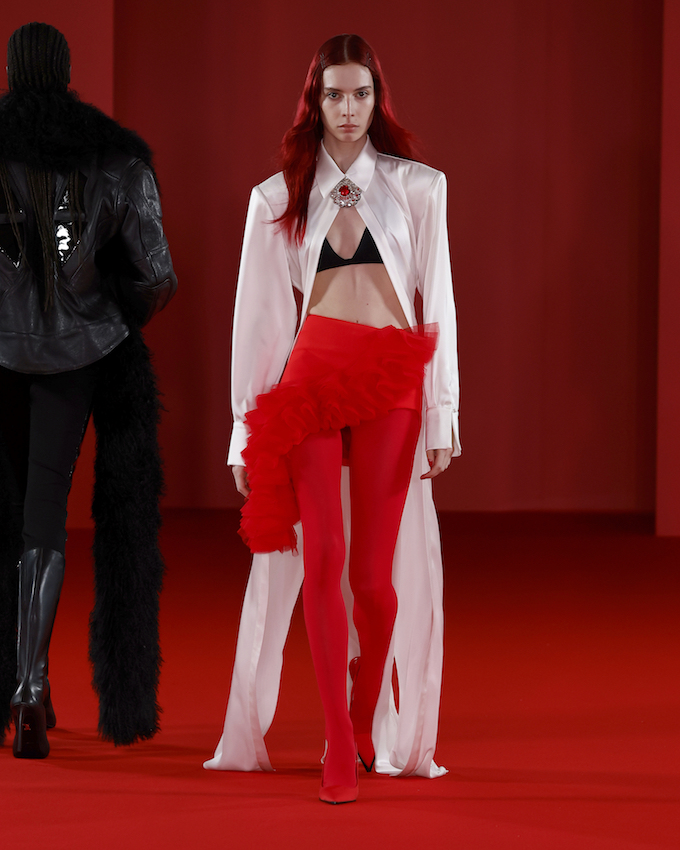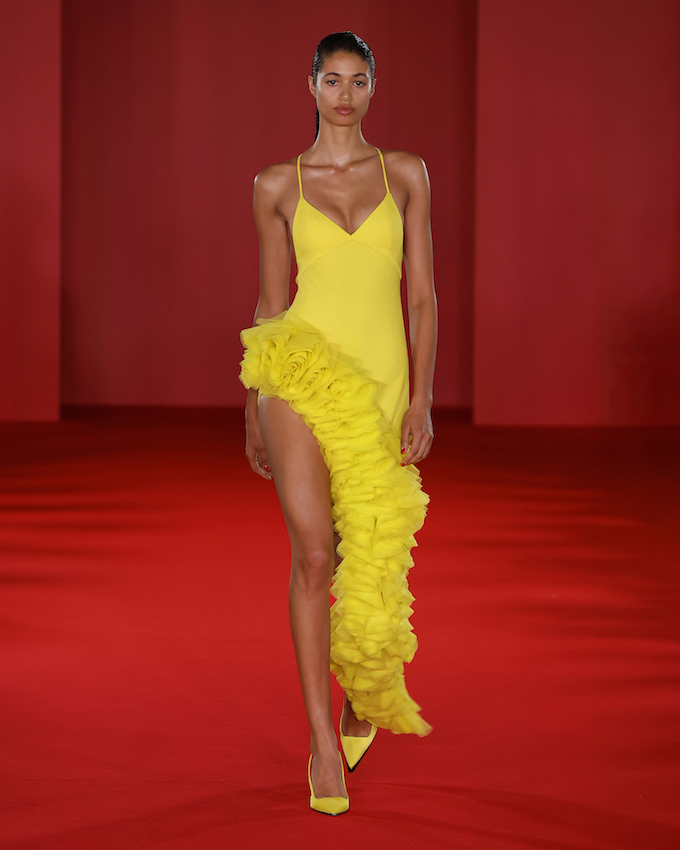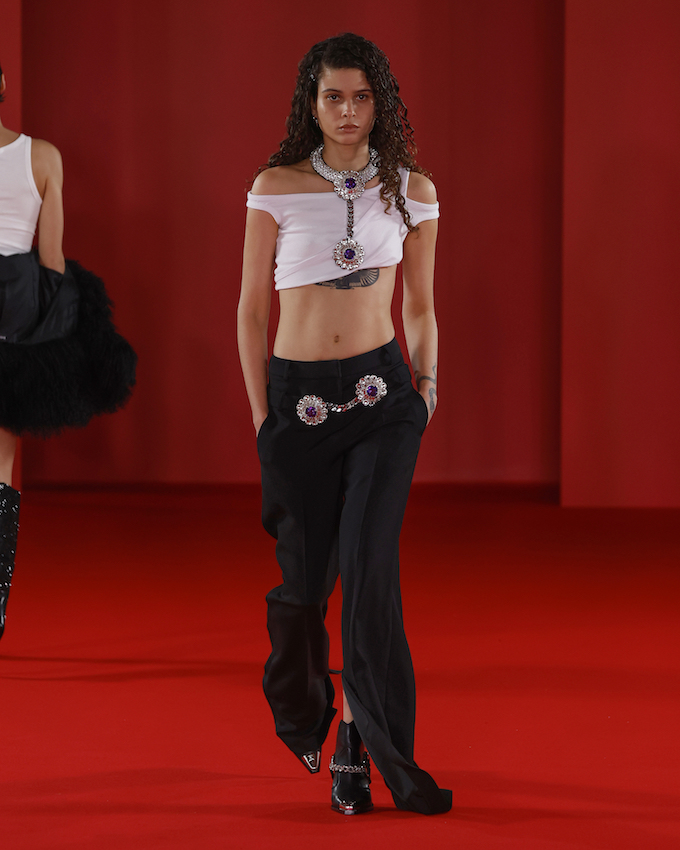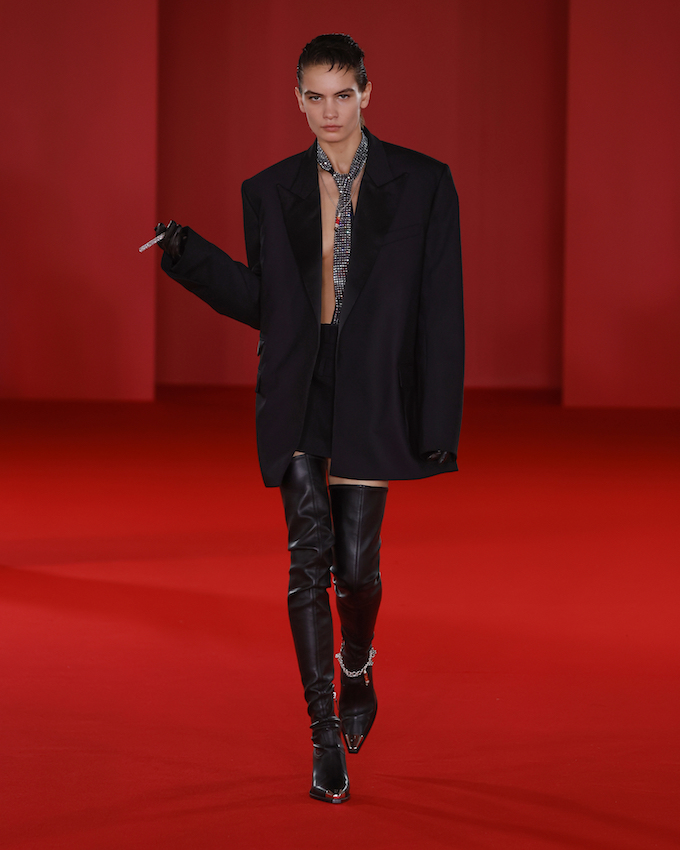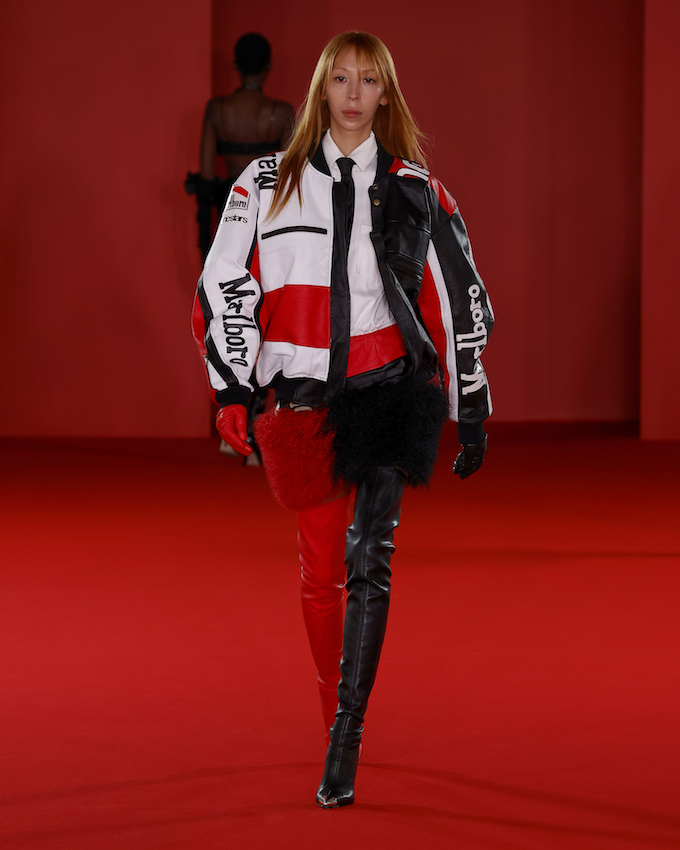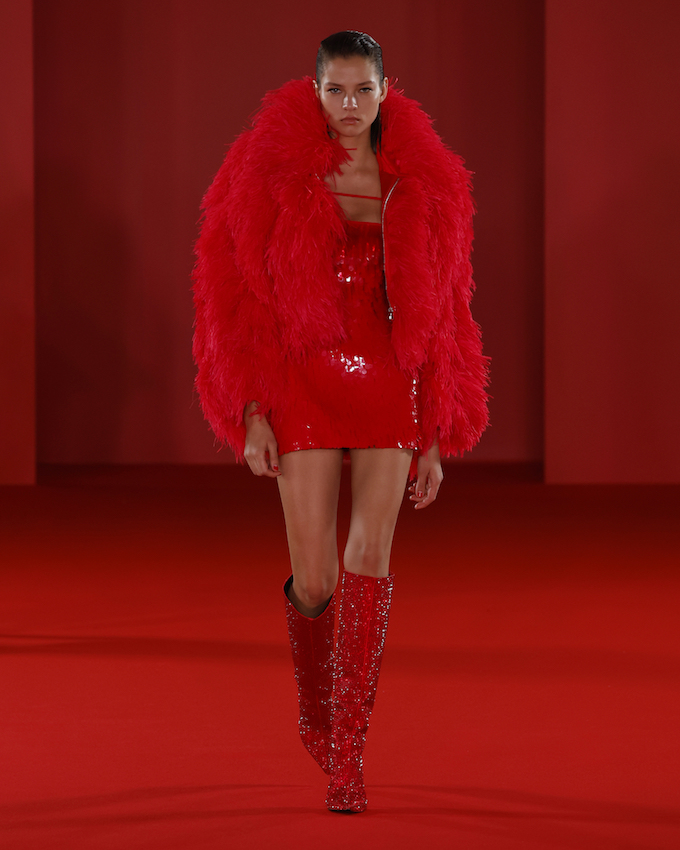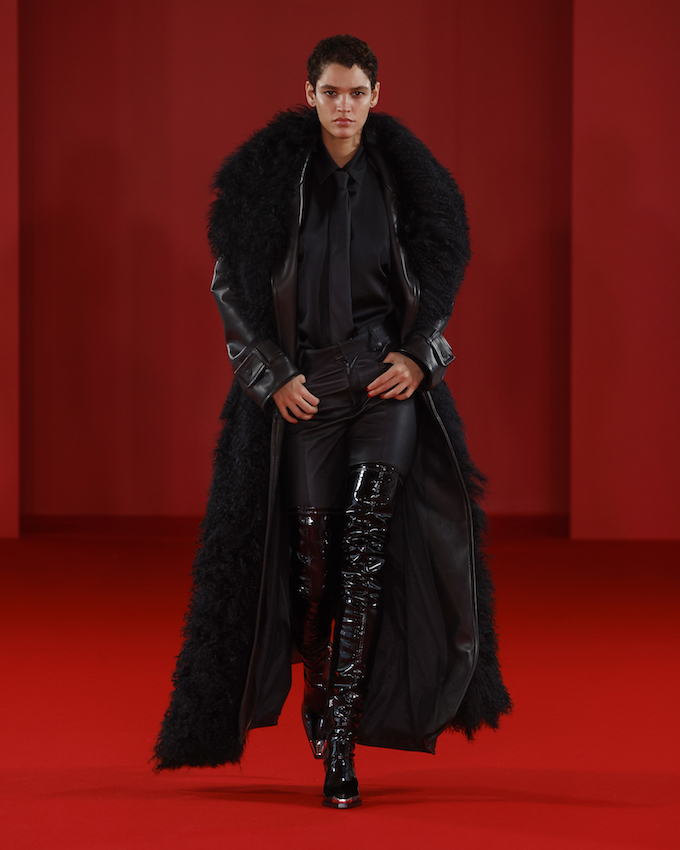Good fashion plays intelligently and freely with sexuality, the one true, core driving force of life. An important journey of self-discovery for every individual is the exploration and free living of their own sexuality. Fashion is an important manifestation of this essential life principle; it is an inevitable experimental space and safe playground for communication and self-expression.
DAVID KOMA is a masterful writer and director on this stage. Through contrasts, his garments point out the difficulties of our dual world and offer a solution to the crossing of extremes.
The Georgian-born artist founded his brand in London in 2009. His clothes are a masterpiece in the exploration for female identity. Body studies playing with the art of revealing and covering. Clothes that push the boundaries of masculinity and confident female sexuality. Casual and glamour wear spiced with elements of couture. A reflection on the free sexuality movements of the sixties.
His creations are regularly worn by world-famous stars, Beyonce, Kendall Jenner, Dua Lipa, Jennifer Lopez, Ana de Armas and Blackpinkto to mention a few. Collections instantly recognisable for their unique style and sophisticated designs have graced pages of numerous magazines from around the world – from established global titles to independent style books.
His sculptural, sensual pieces exude confidence and strength. The brand's aesthetic is described in three words: seductive, feminine and timeless.
The Autumn-Winter 2023 collection is a study in the typical elements of twentieth-century glamour: red lips, glittering nails, polished glass heels, satin lapels, red furs, shiny patent leather...
One of the inspirations for the collection is the legend Marlene Dietrich, whose clothes are a new way of interweaving the feminine and masculine symbols of desire. Inspired by the icon of the 1930s, the 60s, which are a constant presence in DAVID KOMA's work, provide the other inspiration. The variety of garments floats between the stylistic play of these two revolutionary eras.
Sense-beguiling colours instinctively connected to glamour paint the collection: glossy lipstick red, regal ultraviolet, alluring lilac and lavender, and electrifying tulip yellow.
The play of textures with leather, furs and ruffles creates an exciting interaction between the traditional evening wardrobes of women and men.
The tuxedo – a Marlene Dietrich signature – is magnified to oversized proportions or slimmed down to fitted longline manifestations. In the process, the traditional smoking is sensualised through post-modern ideas of seductiveness: the hemlines of jackets are shortened while trousers appear in the glamourous texture of patent leather or as thigh-high boots.
The classic men’s shirt is twisted into erotic shapes: a mini dress in shirting fabric, a shirt body in cotton, a shirt gown in silk.
The asymmetrical silhouettes are a masterpiece of hide and reveal.
DAVID KOMA writes a modern mythology. A modern bible, in fact, in which Eve, awakening to her corporeality, both covers and decorates her intimate parts with hand-cut leather flowers.
The contrast of covering and revealing creates exciting shapes and spectacular textures. Liquid satin lingerie, crystal-encrusted knitwear, fluffy mohair halter-neck mini dresses, and gowns embroidered with ombré sequins that cascade from transparent to opaque.
Three-dimensional representations of the same study abound in bouncing plume trims, effervescent ruffles, evening stoles interpreted in Mongolian lamb, and chainmail tops adorned with hand-cut leather flowers glossed as if dipped in red nail varnish.
The image of the red nail is further celebrated in garments embellished in elongated red sequins.
Oversized crystal neckpiece and closures on jackets nod at jewelled cufflinks.
The presence of the smoking jacket inspires a research into the forgotten history of cigarettes. In the late 1920s, one element of gender discrimination was the ban on women smoking. On 31 March 1929, a taboo was broken when young ladies smoked in the crowd at the New York Easter Parade. In what became known as the 'Torches of Freedom', the suffragette movement protested against the vulgarisation of women smokers. This narrative inspires a collaboration with the jeweller Emily Frances Barrett – who has previously worked with David Koma – who encapsulates a modern-day smoker’s “last cigarette” into resin pendants as a memory of an old-fashioned symbol of glamour loaded with historical context.
Nods to cigarettes likewise appear in adornments on garments and in the motifs of repurposed vintage motorcycle jackets.
As in all DAVID KOMA collections, footwear has been given a prominent role. With their metallic elements and bold lines, the stilettos and thigh-high patent leather boots brilliantly ground the comitted women of our time who dare to taste forbidden fruits.
______
All looks:


